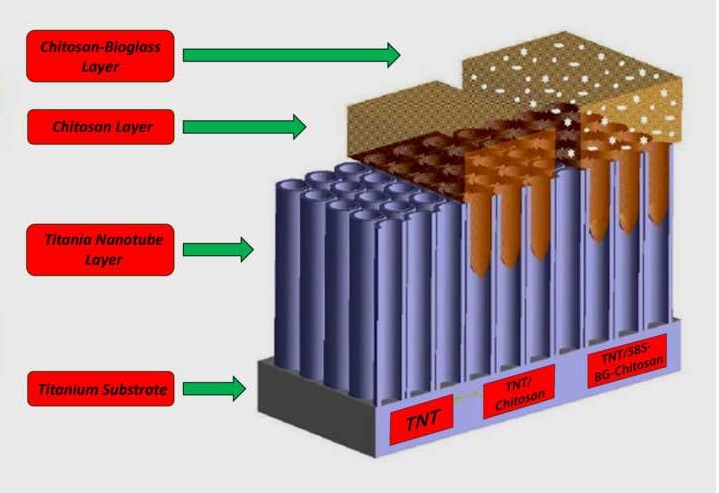- English
- فارسی
Chitosan-58S bioactive glass nanocomposite coatings on TiO2 nanotube: Structural and biological properties
Hamidreza Mokhtari, Zahra Ghasemi, Mahshid Kharaziha, Fathollah Karimzadeh, Farzaneh Alihosseini
Bacterial infection and insignificant osseointegration have been recognized as the main reasons of the failures of titanium based implants. The aim of this study was to apply titanium oxide nanotube (TNT) array on titanium using electrochemical anodization process as a more appropriate substrate for chitosan and chitosan-58S bioactive glass (BG) (58S-BG-Chitosan) nanocomposite coatings covered TNTs (TNT/Chiosan, TNT/58S-BG-Chitosan, respectively) through a conventional dip-coating process. Results showed that a TNT layer with average inner diameter of 82 ± 19 nm and wall’s thickness of 23 ± 9 nm was developed on titanium surface using electrochemical anodization process. Roughness and contact angle measurement showed that TNT with Ra = 449 nm had highest roughness and hydrophilicity which then reduced to 86 nm and 143 nm for TNT/Chitosan and TNT/58S-BG-Chitosan, respectively. In vitro bioactivity evaluation in simulated buffer fluid (SBF) solution and antibacterial activity assay predicted that TNT/58S-BG-Chitosan was superior in bone like apatite formation and antibacterial activity against both gram-positive and gram-negative bacteria compared to Ti, TNT and TNT/Chitosan samples, respectively. Results revealed the noticeable MG63 cell attachment and proliferation on TNT/58S-BG-Chitosan coating compared to those of uncoated TNTs. These results confirmed the positive effect of using TNT substrate for natural polymer coating on improved bioactivity of implant.


